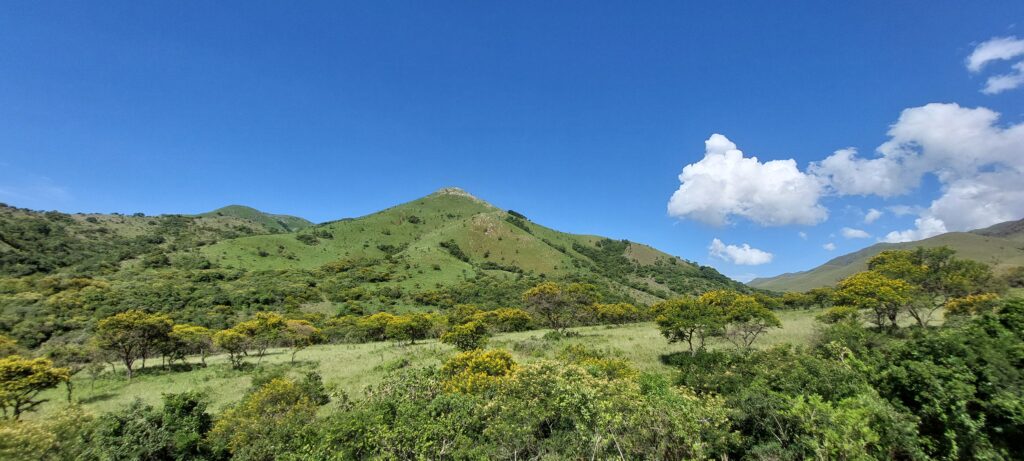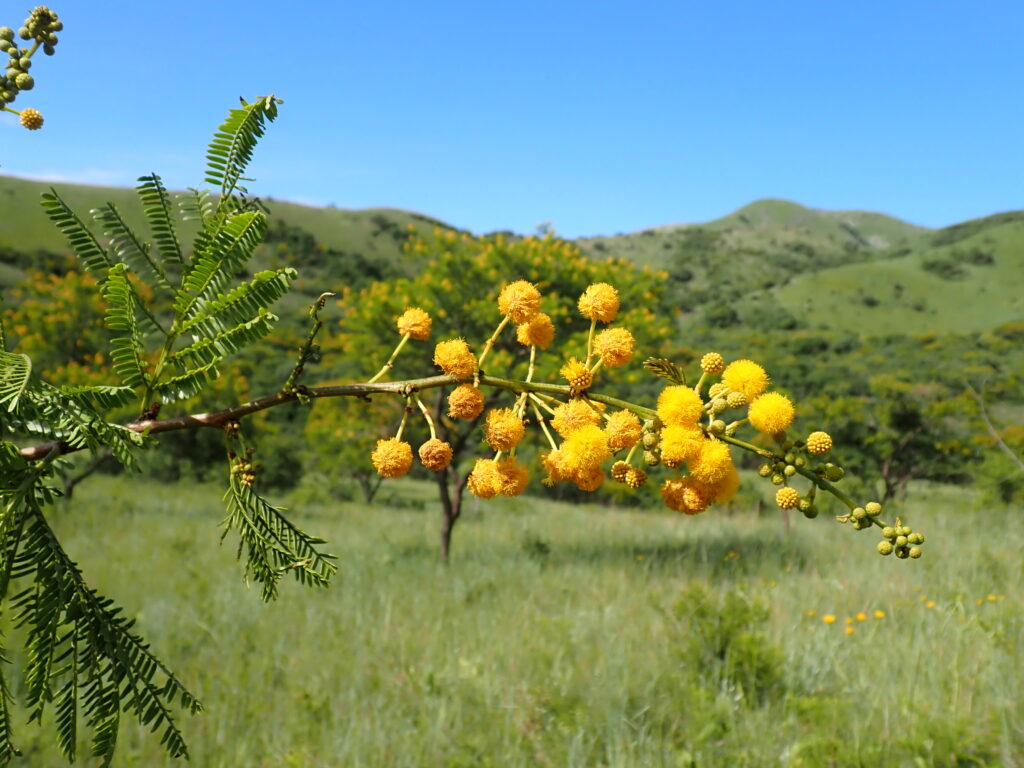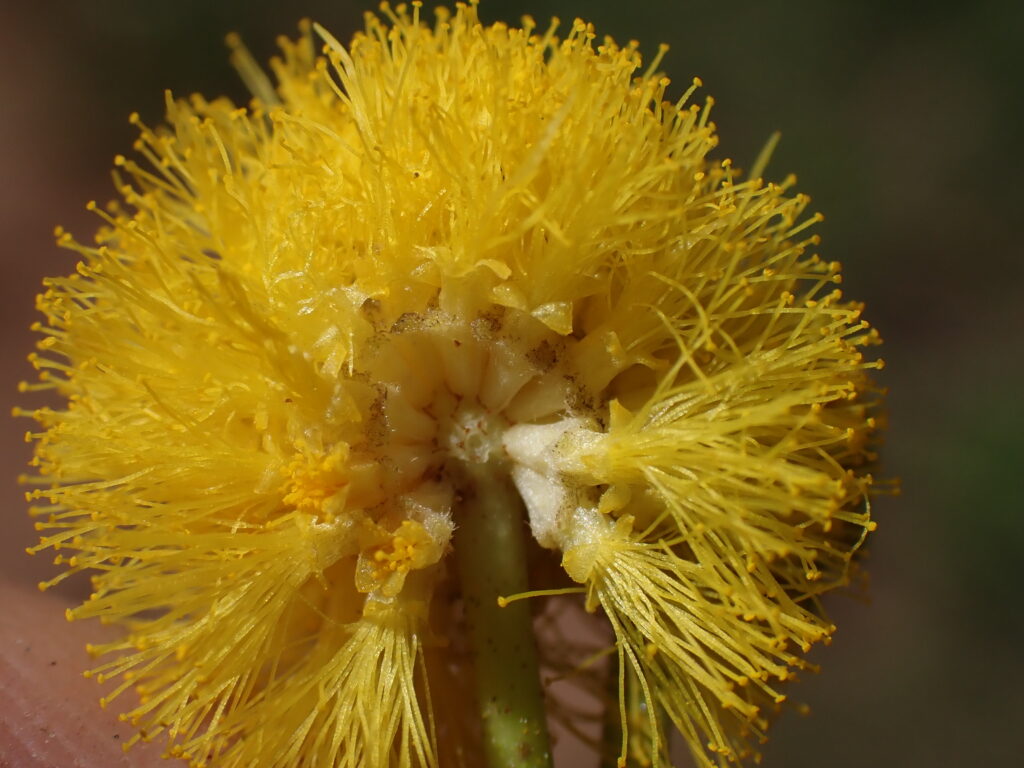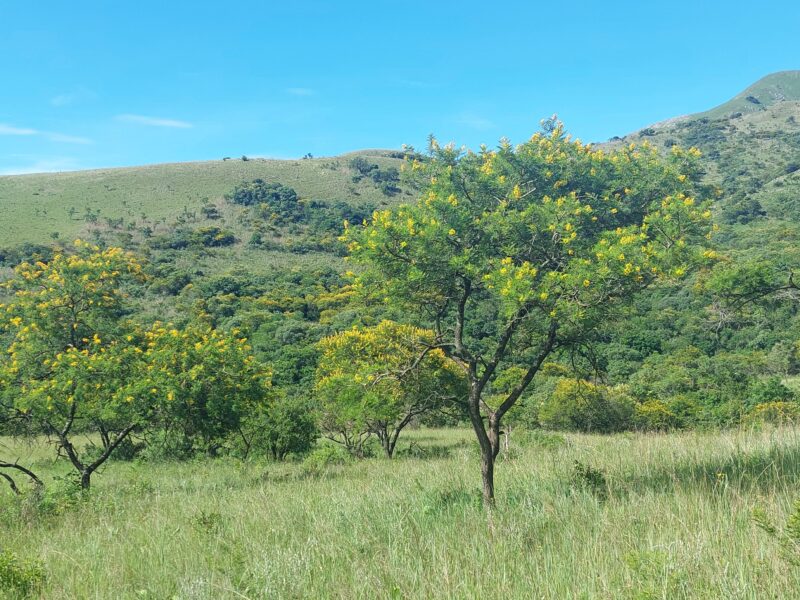
Flowering Vachellia karroo trees bring a singular beauty to Mountainlands that will inspire poets and evoke their deep emotions. During blooming season, the emerald expanse of woodlands and grasslands are transformed as vibrant yellow blossoms burst forth. The air is filled with the sweet fragrance of these flowers, carried on the breeze and inviting pollinators like bees to come closer.

Once known as Acacia karroo, Vachellia karroo is commonly called Sweet Thorn in English, Soetdoring in Afrikaans, and siNga or Sitwetwe in siSwati. The name “Sweet Thorn” refers to the pleasant gum that oozes from the tree’s wounds—a sweet, sticky substance that has delighted both humans and animals alike. In winter, these evergreen trees stand as silent sentinels, their dark, grey bark and vibrant green canopy creating a striking contrast against the otherwise straw-colored grasses.
Beyond their striking appearance, Vachellia karroo plays a vital role in the ecosystem. They provide shelter for a variety of bird species and sustenance for animals such as giraffes and kudus, who graze on the leaves and seed pods. Their gum is consumed by creatures like bush babies, adding another layer to the intricate web of life they support.
The tree is just as valuable to humans. Vachellia karroo is prized for its dense wood, used for firewood, furniture, curios and building materials. The tannin-rich bark serves as a natural reddish dye and is also utilized in the tanning of leather. In addition, the seeds can be roasted to serve as a coffee substitute—a rich, earthy taste for those seeking an alternative to traditional brews.

An inflorescence consists of many small flowers.
But it doesn’t stop there. The medicinal properties of Vachellia karroo are numerous. The bark, leaves, and gum have long been used to treat a wide range of ailments, from colds and flu to dysentery, wounds, and even cattle poisoning. The tree’s impressive list of “anti’s” includes antioxidant, antibacterial, antifungal, antimalarial, and anti-inflammatory properties, among others. Truly, Vachellia karroo is a gift that keeps on giving—an evergreen source of beauty, sustenance, and healing.

